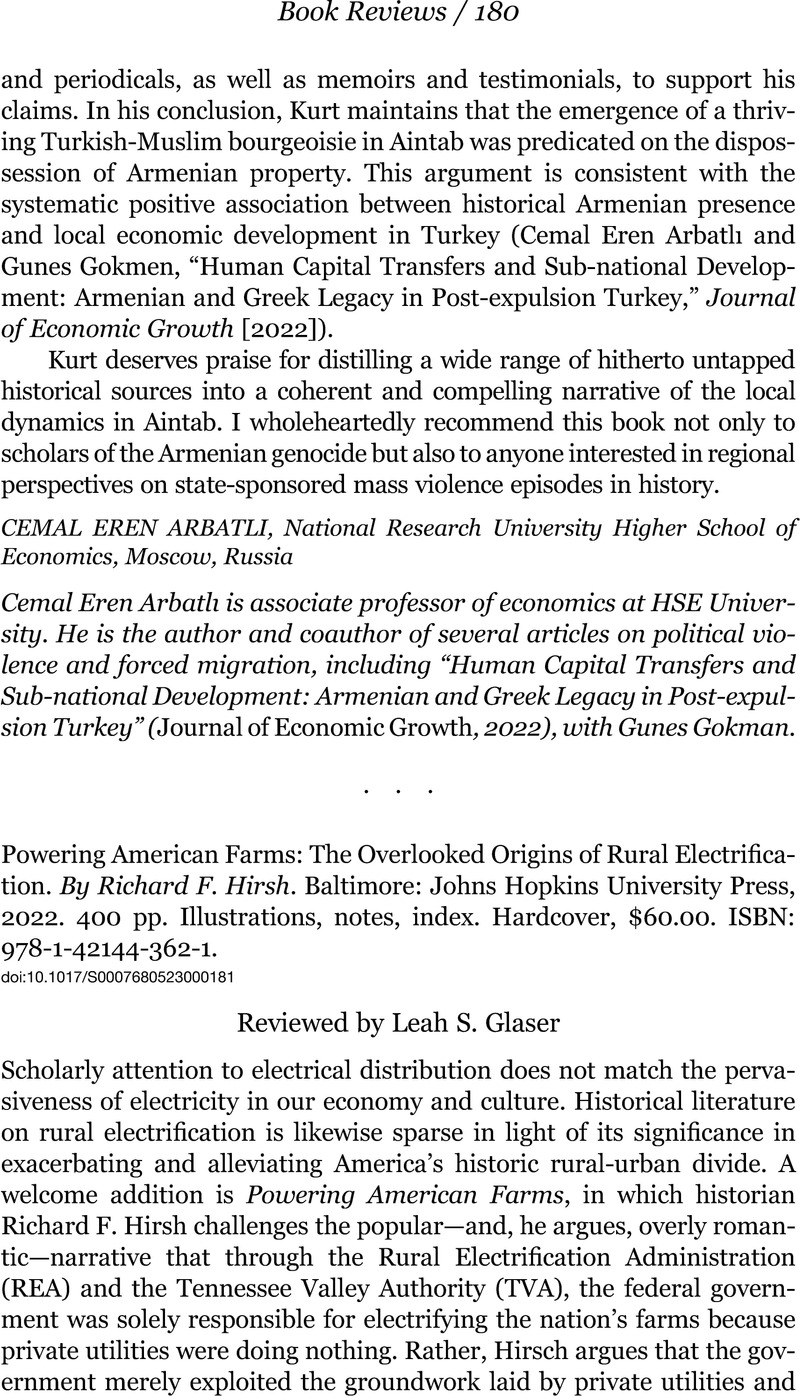No CrossRef data available.
Article contents
Powering American Farms: The Overlooked Origins of Rural Electrification. By Richard F. Hirsh. Baltimore: Johns Hopkins University Press, 2022. 400 pp. Illustrations, notes, index. Hardcover, $60.00. ISBN: 978-1-42144-362-1.
Review products
Powering American Farms: The Overlooked Origins of Rural Electrification. By Richard F. Hirsh. Baltimore: Johns Hopkins University Press, 2022. 400 pp. Illustrations, notes, index. Hardcover, $60.00. ISBN: 978-1-42144-362-1.
Published online by Cambridge University Press: 10 May 2023
Abstract
An abstract is not available for this content so a preview has been provided. Please use the Get access link above for information on how to access this content.

- Type
- Book Review
- Information
- Copyright
- Copyright © 2023 The President and Fellows of Harvard College


